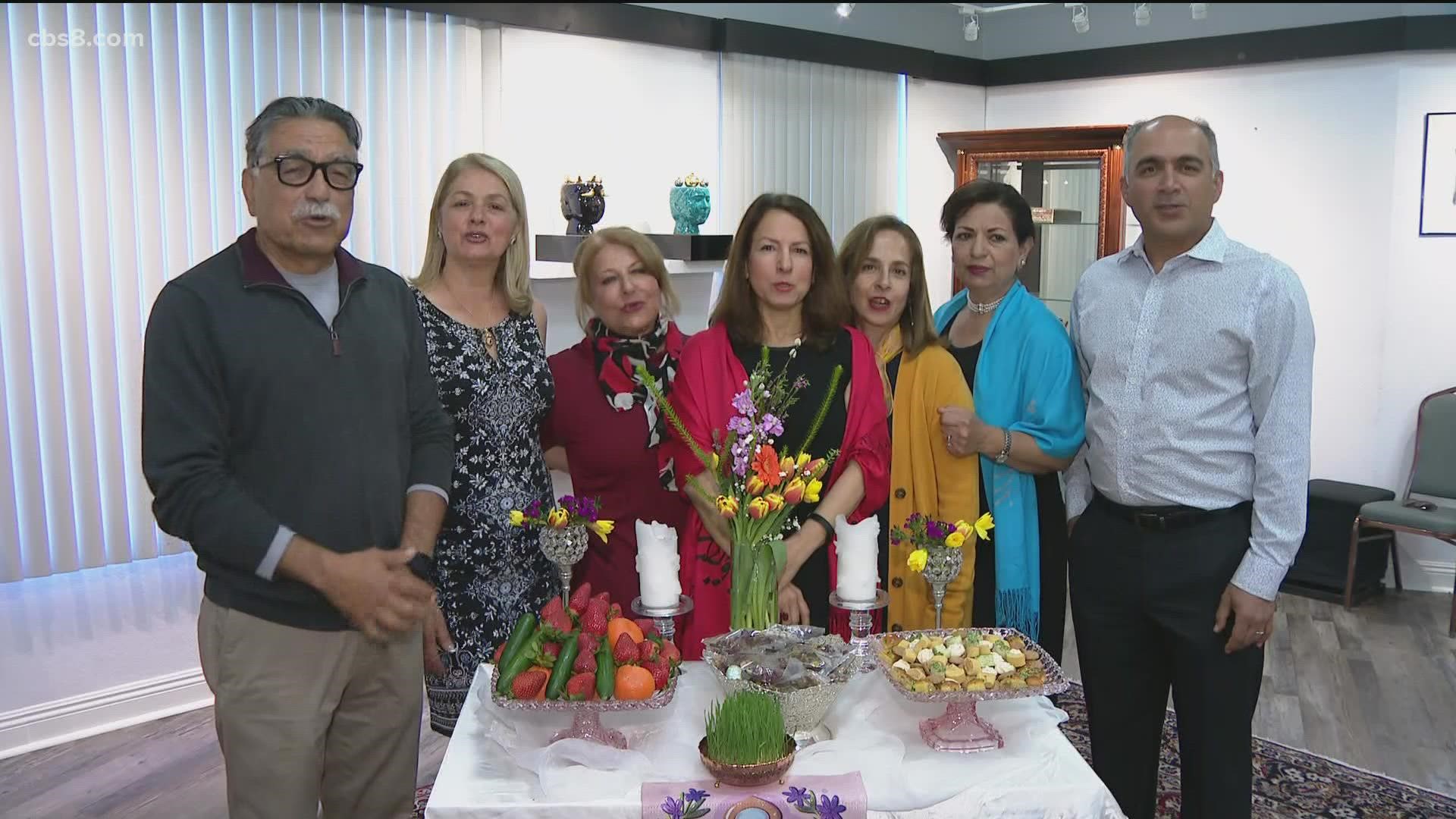SAN DIEGO COUNTY, Calif — On the first day of spring Persians celebrate Nowruz, also known as the New Year. On Sunday at 8:33 a.m. it will be celebration time among thousands of families across San Diego and millions across the world.
Before the New Year, Neda wanted to share some of the rich traditions and meanings behind them. So as a Persian herself, she says “khosh omadeen” which means thanks for being here. We hope you enjoy a little taste of Iran.
“Har Roozetan Nowruz, Nowruzetan Pirooz.” That’s the wish for a happy new year from the Persian Cultural Center of San Diego. The Persian Cultural Center of San Diego (PCC) is dedicated to sharing the rich history and culture of Iran with San Diegans.
Shahla Salah, President of the Persian Cultural Center says, “Persian culture is such an ancient culture and it has really influenced culture around the world.”
So they were beaming with pride as we discussed the meaning behind many traditions.
One of those traditions is celebrating the Persian New Year, “the first day of spring, the first day of the Iranian month of Farvardeen, and the first day of the year, we celebrate life, happiness, and health,” says Salah.
And that celebration involves gathering around a table known as a Haftseen, an elaborate sight, prepared several days in advance with “haft” or seven items that start with “seen” or the letter S.
Farideh Vasoudi Fazel, a Board Member of the PCC shows us the Haftseen and explains each of the items and what they means.
SEEB – is apple which is the symbol of beauty.
SABZEH – are sprouts which are a symbol of rebirth and growth.
SENJED – is a lotus tree fruit and is a symbol of love.
SAMANOO – is wheat germ and is a symbol of power and strength.
SERKEH – is vinegar and is a symbol of patience.
SOMAGH – is sumac, a spice, and is a symbol of the sunrise.
SEER – is garlic and is a symbol of health.
In addition to those seven items, Persians will also include decorated eggs as a symbol for fertility. The table is also decorated with flowers, especially hyacinth to represent beauty. And most tables will have a mirror as a reminder of self-reflection.
Ali Sadr is the Principal at the Iranian Scool of San Diego and he says the PCC played an instrumental role in having Nowruz in the U.N. calendar, accepted as an international holiday.
Sadr said, “when we came here after the Iranian revolution and after the hostage crisis, Iranians didn’t have a good name and didn’t have a good reputation. People didn’t want to be our friends and they were reluctant to say they were Iranians.”
But now he finds Iranians are embraced in San Diego’s diverse community.
Fariba Babakhari-Ghazi is the Vice-Principal of the Iranian School of San Diego and she says, “I love my heritage and I think it’s important for every culture to pass that to next generation. This is important otherwise everything is going to disappear.”
And for many Iranians they simply want their most cherished memories of growing up to be felt here in a place they’re now proud to call home.
In Iran, they would celebrate for 13 days after the New Year. There would be no work or school as families go from house to house visiting their loved ones, typically from the oldest to the youngest. And on the 13th day, they celebrate what’s called Seezdah Behdar.
Everyone is invited to the Seezdah Behdar celebration on April 3 at Liberty Station’s NTC park from noon to 6 p.m.
And at 8:33 a.m. on Sunday be sure you give your loved ones an extra hug and maybe enjoy something sweet as a way to bring luck to the new year.
WATCH RELATED: Celebrating Persian New Year (March 18, 2022)

